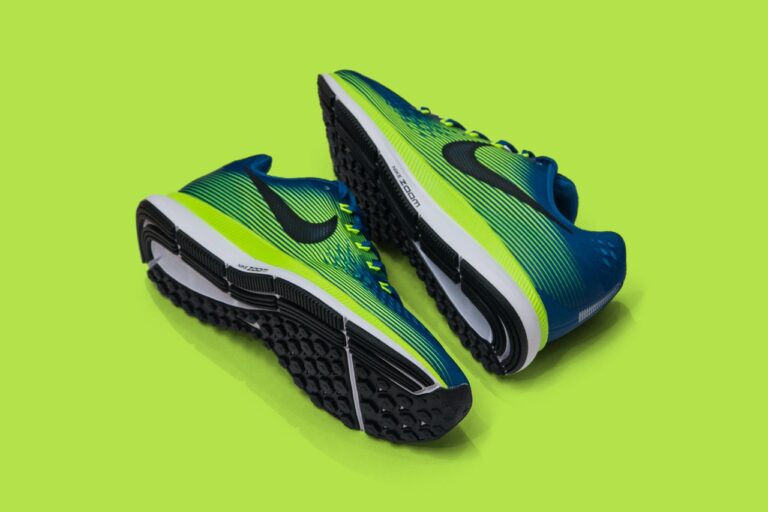If you are thinking about – when to replace your running shoes, then it doesn’t have a direct response, however, there are a couple of key pointers which should direct you on distinguishing when the right occasion is to resign your old running shoes.
It’s obviously true that an enormous extent of sprinters neglect to supplant their running shoes at the ideal opportunity. As a result wind up running in shoes that don’t give satisfactory insurance, specifically padding. Things being what they are, and how would you recognize when is the perfect opportunity to purchase new running shoes? Also, what amount does it truly matter?
Table of Contents
Why supplanting your running shoes is significant
Running shoes can be expensive and unavoidably you’ll need to get the most extreme use out of them, however, there are chances once the shoe is excessively worn. Over the long run, the shock retention of a shoe lessens.
The conspicuous indications of wear are commonly on the outsole of the shoe where you will see the track beginning to erode. Notwithstanding, it is the wear to the padded sole or padding layer of the shoe that can expand your odds of injury.
As the padding reduces over the long run, this implies the effect on the body with each progression is more prominent. A sprinter with worn shoes might begin to encounter injury niggles which can deteriorate over the long run. A well-used padded sole can imply that the foot moves internally or outwards beyond what is ordinary, which can prompt lower leg and knee issues. Therefore supplanting your running shoes at the perfect opportunity is of essential significance.
Step-by-Step Instructions to Tell When to Replace Running Shoes:
The time later which you want to resign your running shoes isn’t something similar for everybody. Normally every sprinter destroys their shoes at a diverse rate, yet the following are a couple of things to pay special attention to assist you with working out when it’s an ideal opportunity to buy some new running shoes:
Distance Ran In Your Shoes
As an unpleasant aide, sprinters ought to hope to get around 500 miles (or 800km) out of their shoes before they need supplanting. This distance will shift as indicated by different factors, for example, body weight, foot type, pressure applied while running, and the surfaces you run on most often.
For instance, a sprinter who does the main part of their runs out and about will probably destroy their shoes quicker than a rough terrain sprinter (over a similar distance). Similarly, a weighty overpronator will destroy their shoes quicker than a light nonpartisan sprinter.
To know the number of miles you have finished from your point of view you should keep a log or utilize an application to record your runs against each pair of shoes that you own.
Search For Signs Of Wear
Investigate your shoes for apparent indications of wear. The main thing you might see is that the track on the external sole has worn out. In some situations, the track might be gone totally or the padded sole might even be uncovered
Take a gander at the padded sole itself and perceive how it feels. Pose yourself with the accompanying inquiries:
Does it feel excessively delicate and springy and break down totally once it’s feeling the squeeze?
A shoe that is – excessively adaptable and can be bowed from the toe to the heel likely hasn’t got a lot of shock ingestion left.
Checking out the shoe from the side are there clear wrinkles in the padded sole? – If so then, at that point, this exhibits how much the shoe is falling when under tension.
Take the two shoes and think about them – One might be essentially worn than the other.
Place the two shoes on a level surface and check whether they stand upright – If they don’t then they are probably going to require supplanting.
Are there tears to the upper shoe? – The most widely recognized will be the shoe wearing through at the toe box, however, it’s conceivable that different pieces of the upper might be harmed.
How Do Your Shoes Feel?
The last thing to consider is the way your running shoes really feel. Alright, they won’t feel as ‘fun as when you originally got them, yet you ought to have a thought of how they feel now to you. Is there a huge tumble off in the degree of solace they give?
Maybe the shoes feel less steady or are imploding at the heel, or they may not feel ‘right’ to you. It’s conceivable that you are beginning to encounter more in the method of niggles, or even rankles that you weren’t getting previously.
Summary
Assuming you are beginning to question the shoes you are running in, then, at that point, that is a decent piece of information that they probably need supplanting. If all else fails get somebody with expert information to investigate them for you. Attempting to squeeze a couple of additional miles out of your shoes and risking injury simply isn’t worth the effort, in addition to you owe yourself another pair of shoes in any case don’t you?





[…] running shoes that fit well and provide adequate support can help to reduce the risk of […]